Corinna Wilderness Experience immerses guests in Tasmania’s Tarkine
Free from cellular coverage and Wi-Fi, this wilderness retreat delivers escapism – pure and simple.
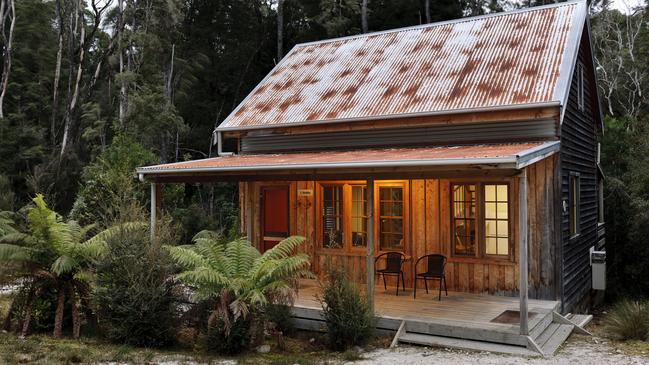
We are deep in the ancient Tarkine in Tasmania’s northwest, Australia’s largest tract of cool temperate rainforest, which has links to Gondwanan flora and fauna. Here, shell middens and depressions of long-gone huts dot the coastline, remnants of the region’s semi-sedentary Aboriginal population.
There’s something soul-stirring just being here, free from cellular coverage and Wi-Fi.
Corinna Wilderness Experience is a long-deserted gold-mining town, now a tourist destination that keeps alive memories of the miners and piners who, along with wretched convicts, dominate the colonial history of Tasmania’s rugged west coast.
“Resort” isn’t the first word that comes into my mind, yet my teenage daughter keeps referring to Corinna as one. I realise she’s right: zero digital connectivity plus deep connection with nature creates a true retreat.
The cabins are each named for a pioneer. While outwardly rustic to blend in with the historic village, inside they’re comfortable and light-filled, with modern kitchens and bathrooms and toasty heating. Ours is named after Jessie Devlyn who, with husband James, raised eight children while living here from 1887. Jessie was the much-loved postmistress and James operated the ferry across the Pieman River.
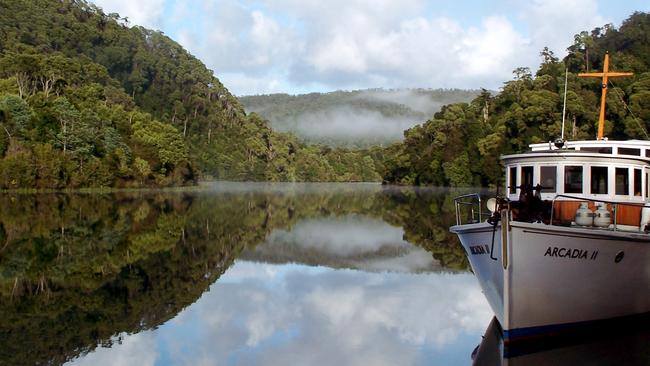
Books and art in the cottage fuel our curiosity about the Tarkine’s history. We sit quietly on the rear deck, watching the trees and imagining thousands of little lives deep in the rainforest. I’m usually more drawn to rolling seascapes, yet there’s something therapeutic about watching the precious Tarkine from this front-row seat. Still, the star of the show at Corinna is the Pieman River, with the choice of two guided cruises and a shack stacked with orange kayaks for DIY exploring.
We head out on Arcadia II, a beautiful old boat that’s seen a lot in its 82 years. The warm and knowledgeable Captain Les Sims is at the helm. “She’s built out of huon pine and she’s heritage-listed,” says Sims, who’s also a shipwright. He reckons the Pieman excursion is the best river cruise in Tasmania, reasoning that the better-known outings from Strahan, south of Corinna, travel mostly on Macquarie Harbour and “only go up the Gordon River for a couple of miles – it’s great but it’s a different experience”.
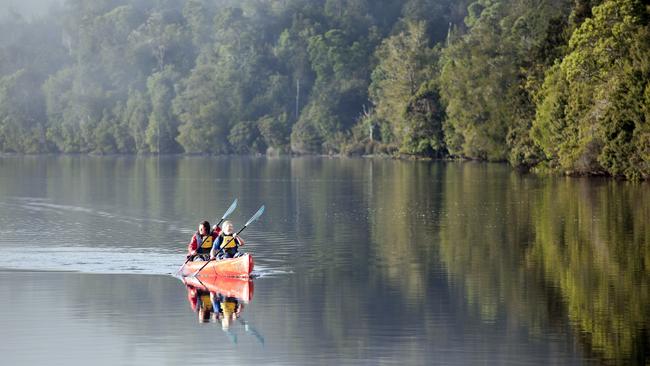
Wind and rain are intrinsic to the moody west-coast atmosphere, and it’s sprinkling and breezy as we cruise towards the infamously treacherous Pieman Heads, with Sims enthusiastically pointing out the highlights. “I’m going to stop the Arcadia so you can get a good look at something really, really rare,” he says.
Our quarry is a slender tree fern, Cyathea cunninghamii, and there’s only 250 mature specimens known in all Tasmania. It’s tall, with a spray of leaves crowning the top of a thin trunk. Until a couple of years ago, there was one on the Huon Pine Walk from Corinna, but a giant myrtle tree fell and smashed it, says Sims. The one we’re looking at was discovered only recently, and Sims has since found a few more. “They’re very hard to find.”
We motor along for about 14km, drinking in the green kaleidoscope of the rainforest. We go ashore at a largely deserted shack community and discover another unique tree, its branches sporting upturned rubber boots. “GUM TREE” says the sign. Boom-tish!
Carrying our packed lunches, we lean into the wind and head for the wild driftwood-strewn beach as a grey fog descends over the Southern Ocean’s breakers. Out of their foaming crests rises a clump of rocks, evidence of the notorious difficulty of navigating Pieman Heads. Many lives have been lost and numerous ships wrecked here over the centuries. As we wind back through the shacks with the roar of the waves echoing in our ears, I’m grateful we’re heading back down the river and not out to sea.
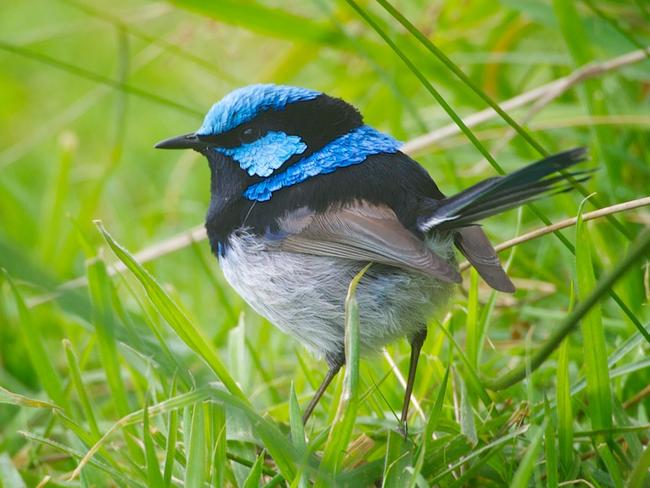
The river and rainforest are gloriously untamed; scores of waterfalls along the banks remain unnamed. This was never guaranteed. As Hydro Tasmania’s Gordon River Dam went up in the 1970s, the Pieman narrowly escaped a similar fate. The depth of its lower stretches were judged too deep for the dam and Corinna was spared from being drowned. The locals call it “the river that saved itself”. Sims makes a passionate argument that, with five major dams on the Pieman, this river needs guaranteed environmental water flows to keep it healthy.
The water is certainly flowing freely when we take the shorter Sweetwater Cruise to Lover’s Falls, reached via wooden steps that disappear into the forest. The smaller boat brings us even closer to the river and a shipwreck is visible in the tannin-stained water.
An azure kingfisher – its feathers eye-poppingly bright – hops on an overwater branch to check us out. The Tasmanian population is critically endangered, yet this one is blissfully unbothered by our passing boat. Ancient huon pines are in abundance and we marvel at trees that have been growing slowly in the stillness for more than 2000 years.
For bird-lovers, it’s heaven. We see black swans and white-bellied sea eagles, and vulnerable hooded plovers comically fast-strutting against the gale on the beach. Around our cabin, the line-up includes superb fairy wrens, yellow-throated honeyeaters, striated pardalotes, grey fan-tails and a green rosella, an endemic Tasmanian species. Fat-bottomed pademelons hop around like it’s their backyard (which, of course, it is).
There are self-guided walks aplenty and always another rare surprise around the corner, such as the neat mud chimney stacks popping up from the sodden forest floor, built by rare burrowing crayfish. Flora fanciers delight in the celerytop pines, native plums, sassafras and Tasmanian laurel.
The pub’s atmosphere is casual, but its menu is refined. We’ve arrived with food to cook but instead we do all our dining at the restaurant, Tannin, including perfectly cooked Cape Grim eye fillet, mushroom risotto with al dente grains and a full-flavoured tomato soup beautifully set off by minty micro herbs.
On the exposed timber walls, framed historical photos add layers to what we’ve learned from the excellent signage around the little village. Corinna deftly combines nurturing the present and honouring the past.
In the know
If driving from the south, check the operating times for the Fatman barge to cross the Pieman River ($28) and reach the resort. Travelling from the north, stop for lunch at the pub in Waratah, and fill up with petrol. The last 30km are on a silica road but a 2WD vehicle will suffice.
Corinna accommodation includes the original roadman’s cottage and the old pub, configured with single and double rooms and available for group bookings. The prime digs are the 16 eco-retreat cabins, which back on to the Tarkine. $239 for a twin eco-retreat cabin, $299 for a two-bedroom family cabin. The Pieman cruise is $95 a person, including lunch; the Sweetwater Cruise is $35 a person.
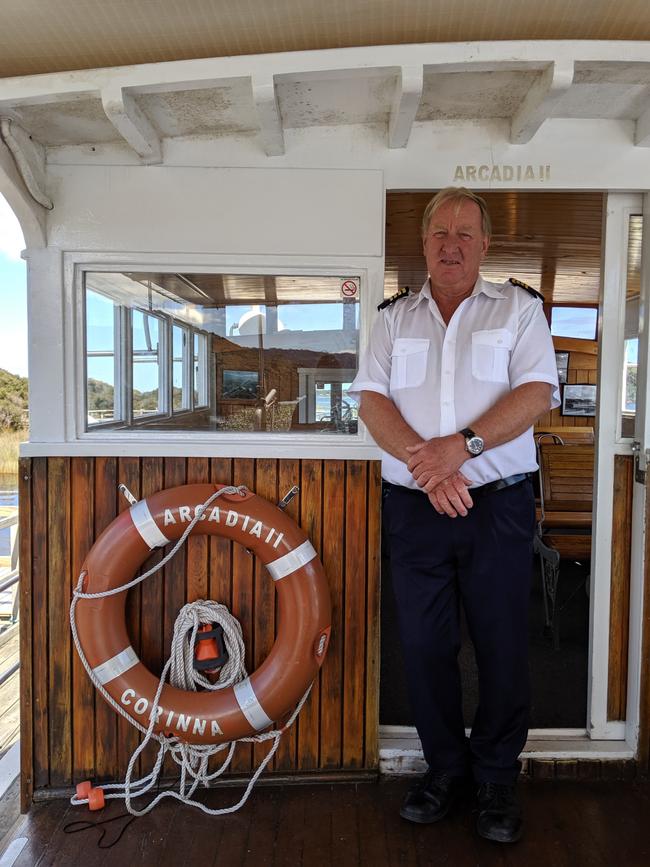
More to the story
The Arcadia II was built in 1939 by the owner of the Arcadia pub in Hobart as a luxury pleasure craft. During World War II, it was requisitioned to serve in Papua New Guinea as a supply ship, and later spent time on Tasmania’s east coast as a scalloping boat. In 1961, Arcadia was brought to the west coast to cruise Macquarie Harbour, heading up to the Pieman in 1970 for its first cruises there. In 2006, the 17m vessel made the journey out of Pieman Heads to be fully refurbished in Launceston, returning safely to Corrina. It’s believed to be the only huon pine river cruiser still operating anywhere in the world and is listed on the Australian Register of Historic Vessels.
Jane Nicholls was a guest of Tourism Tasmania and Corinna Wilderness Experience.

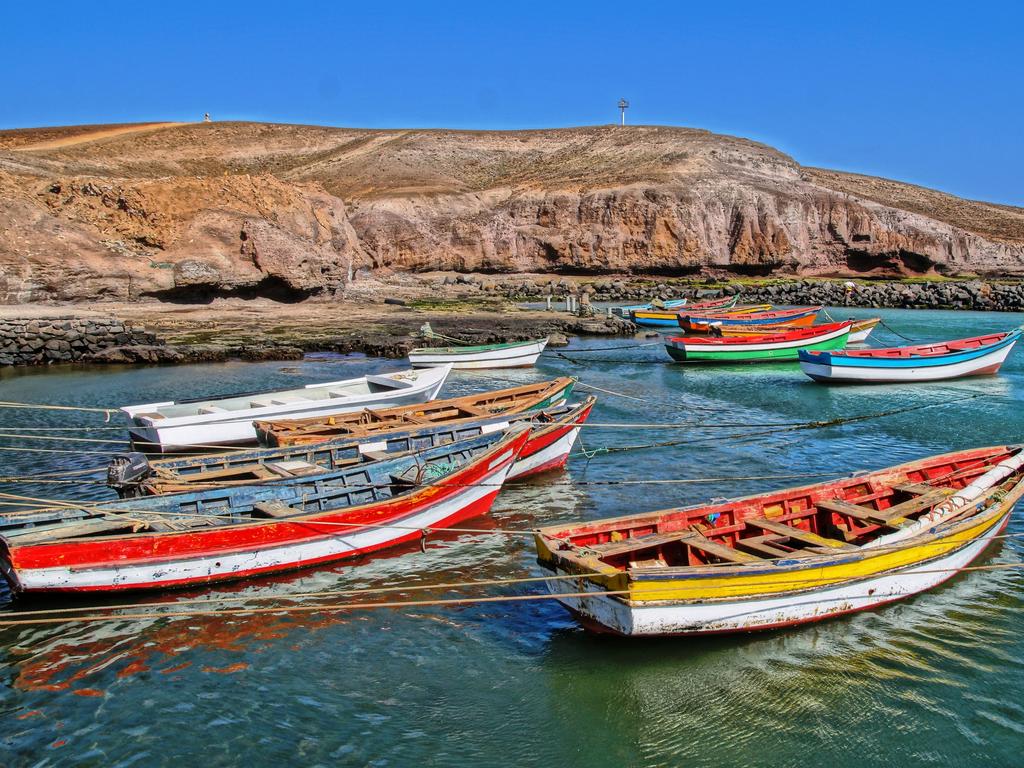

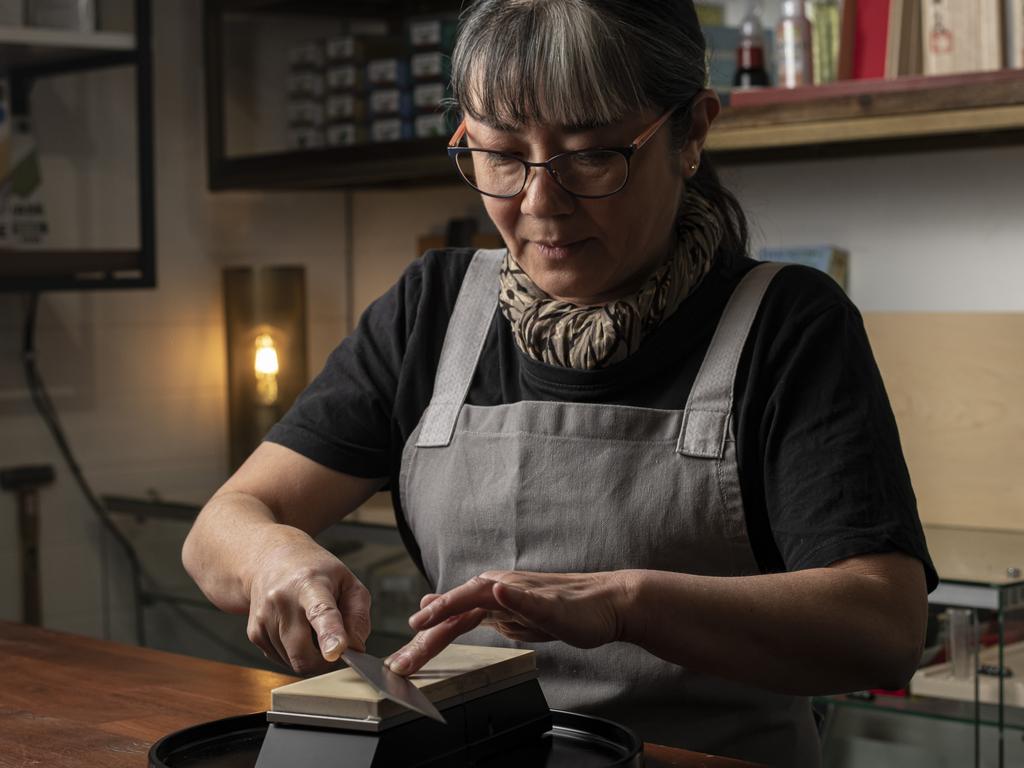

To join the conversation, please log in. Don't have an account? Register
Join the conversation, you are commenting as Logout